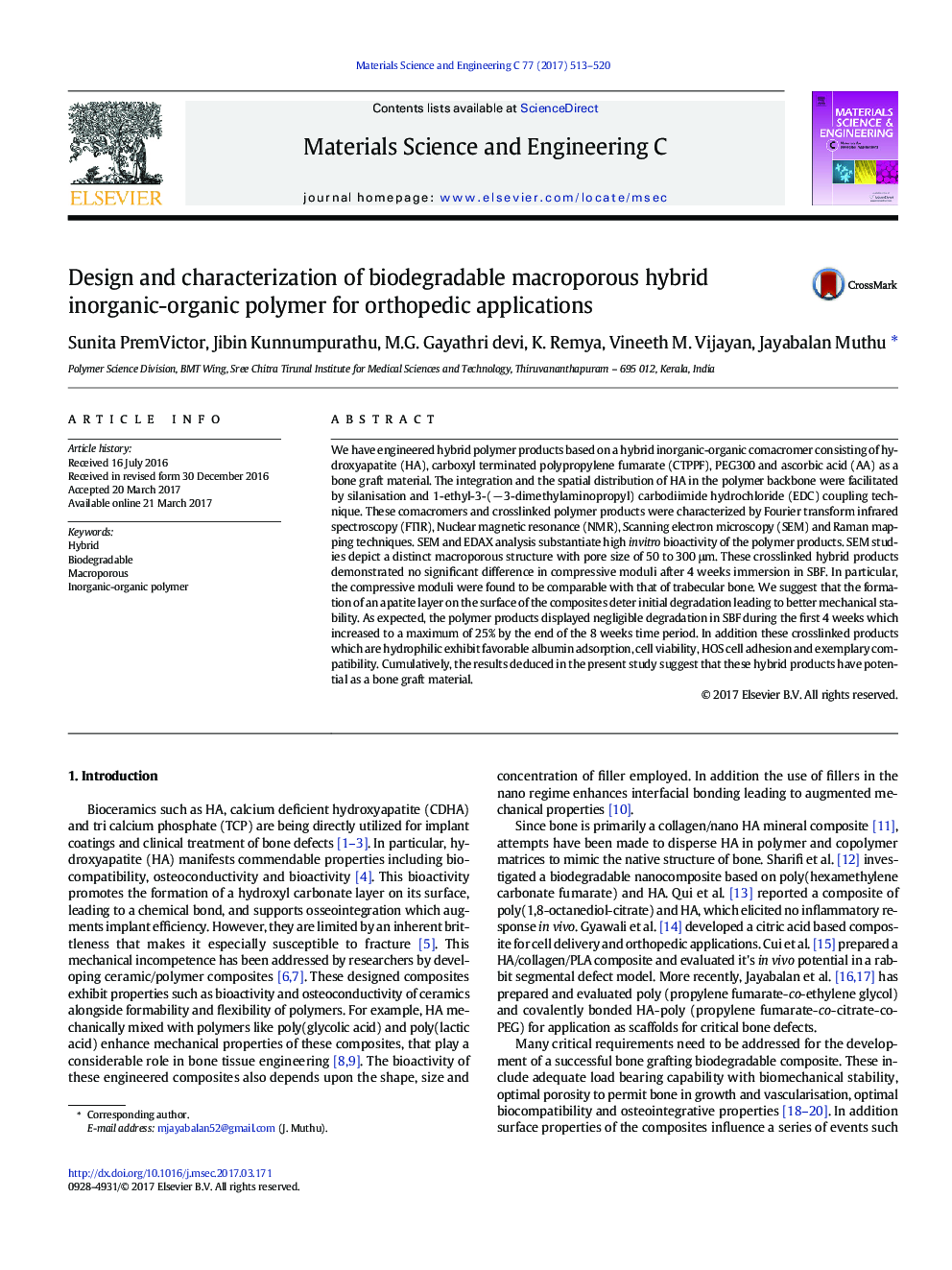| Article ID | Journal | Published Year | Pages | File Type |
|---|---|---|---|---|
| 5434551 | Materials Science and Engineering: C | 2017 | 8 Pages |
â¢Engineered bone graft material based on hydroxyapatite, polypropylene fumarate, PEG and ascorbic acid.â¢Biomineralisation In-vitro in the composites deters initial degradation and favors better mechanical stability.â¢Material-HOS cell interaction reveals good cell adhesion and inappreciable toxicity.
We have engineered hybrid polymer products based on a hybrid inorganic-organic comacromer consisting of hydroxyapatite (HA), carboxyl terminated polypropylene fumarate (CTPPF), PEG300 and ascorbic acid (AA) as a bone graft material. The integration and the spatial distribution of HA in the polymer backbone were facilitated by silanisation and 1-ethyl-3-(â 3-dimethylaminopropyl) carbodiimide hydrochloride (EDC) coupling technique. These comacromers and crosslinked polymer products were characterized by Fourier transform infrared spectroscopy (FTIR), Nuclear magnetic resonance (NMR), Scanning electron microscopy (SEM) and Raman mapping techniques. SEM and EDAX analysis substantiate high invitro bioactivity of the polymer products. SEM studies depict a distinct macroporous structure with pore size of 50 to 300 μm. These crosslinked hybrid products demonstrated no significant difference in compressive moduli after 4 weeks immersion in SBF. In particular, the compressive moduli were found to be comparable with that of trabecular bone. We suggest that the formation of an apatite layer on the surface of the composites deter initial degradation leading to better mechanical stability. As expected, the polymer products displayed negligible degradation in SBF during the first 4 weeks which increased to a maximum of 25% by the end of the 8 weeks time period. In addition these crosslinked products which are hydrophilic exhibit favorable albumin adsorption, cell viability, HOS cell adhesion and exemplary compatibility. Cumulatively, the results deduced in the present study suggest that these hybrid products have potential as a bone graft material.
